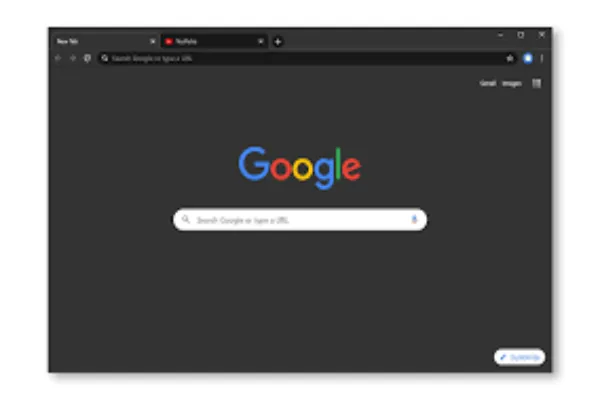The Rise of Google Dark Mode

Illuminating the Digital Realm of Google Dark Mode
Author: Terri Nash
Independent freelance writer
In an age when digital interfaces permeate every aspect of our lives, the concept of dark mode has taken center stage, promising not only a more visually appealing experience but also potential benefits for device battery life and user well-being.
Among the tech giants championing this trend, Google has stepped into the limelight with its implementation of Google dark mode across its suite of products and services. This shift has not only transformed the aesthetics of Google’s offerings but has also sparked conversations about the intersection of design, technology, and user preferences.
Aesthetic Evolution and Eye Comfort

The introduction of dark mode by Google signifies a significant departure from the traditional bright and white interfaces that have dominated the digital landscape. Google dark mode, characterized by dark backgrounds and light text, offers a visually striking alternative that is easier on the eyes, especially during low-light conditions. This change acknowledges the growing need for eye comfort, especially as users spend extended periods interacting with screens.
The Science Behind Google Dark Mode’s Appeal
The appeal of dark mode isn’t purely aesthetic; there’s science to support its advantages. The prevalence of bright screens emitting blue light can disrupt circadian rhythms and impact sleep patterns. Google dark mode addresses this concern by reducing blue light emission, potentially leading to improved sleep quality and overall well-being. By providing an alternative that aligns better with the natural rhythm of the day, Google’s implementation of dark mode caters to users’ holistic health.
Battery Life and Energy Efficiency
Beyond its visual allure, dark mode has also been lauded for its potential impact on device battery life and energy consumption. On OLED and AMOLED screens, individual pixels emit their own light, and dark mode takes advantage of this by dimming or turning off pixels in areas displaying black or dark colors. This results in reduced energy consumption, which, in turn, can contribute to longer battery life. As users increasingly seek devices that align with sustainable practices, Google dark mode aligns with this broader trend.
Cross-Platform Implementation
Google’s adoption of dark mode doesn’t stop at a single product; it spans across its ecosystem. From popular apps like Gmail and YouTube to the Android operating system itself, the dark mode aesthetic is consistently applied. This seamless integration ensures a unified experience for users, regardless of the platform they are using. This approach underscores Google’s commitment to enhancing user experience across its various products and services.
Google Dark Mode Personalization and User Choice

While Google dark mode offers a uniform aesthetic, Google recognizes that personalization is key. As such, users have the option to enable or disable dark mode according to their preferences. This customization not only reflects Google’s dedication to user-centered design but also acknowledges the diversity of user needs and the desire for control over their digital environments.
Design Challenges and Considerations
While Google dark mode offers numerous benefits, its implementation isn’t without challenges. Designing interfaces that seamlessly transition between light and dark modes requires careful consideration of contrast, readability, and user experience. Google’s designers have navigated these challenges adeptly, ensuring that both modes maintain a high level of usability and accessibility.
A Glimpse into the Digital Future of Google Dark Mode
Google Dark Mode mode is more than just a superficial design trend; it’s a reflection of the evolving relationship between technology and human interaction. As users become increasingly conscious of their digital well-being, Google’s focus on eye comfort, battery efficiency, and personalization signals a move toward more holistic and user-centered design.
The integration of Google Dark Mode across its suite of products demonstrates Google’s commitment to enhancing the digital experience, offering a glimpse into the future of technology that prioritizes both aesthetics and user well-being.